| [1]Sia SK, Whitesides GM. Microfluidic devices fabricated in poly(dimethylsiloxane) for biological studies. Electrophoresis. 2003;24(21):3563-3576. [2]Kuncova-Kallio J, Kallio PJ. PDMS and its suitability for analytical microfluidic devices. Conference proceedings: annual International Conference of the IEEE Engineering in Medicine and Biology Society IEEE Engineering in Medicine and Biology Society Annual Conference. 2006;1:2486-2489. [3]Jang LW, Lee J, Razu ME, et al. Fabrication of PDMS Nanocomposite Materials and Nanostructures for Biomedical Nanosystems. IEEE Trans Nanobioscience. 2015;14(8): 841-849. [4]Kim SJ, Lee JK, Kim JW, et al. Surface modification of polydimethylsiloxane (PDMS) induced proliferation and neural-like cells differentiation of umbilical cord blood-derived mesenchymal stem cells. Journal of materials science J Mater Sci Mater Med. 2008;19(8):2953-2962. [5]Kamei K, Mashimo Y, Koyama Y, et al. 3D printing of soft lithography mold for rapid production of polydimethylsiloxane -based microfluidic devices for cell stimulation with concentration gradients. Biomed Microdevices. 2015;17(2): 36. [6]Stanton MM, Parrillo A, Thomas GM, et al. Fibroblast extracellular matrix and adhesion on microtextured polydimethylsiloxane scaffolds. J Biomed Mater Res B Appl Biomater. 2015;103(4):861-869. [7]Kidambi S, Udpa N, Schroeder SA, et al. Cell adhesion on polyelectrolyte multilayer coated polydimethylsiloxane surfaces with varying topographies. Tissue Eng. 2007; 13(8):2105-2117. [8]Tsimbouri PM. Adult Stem Cell Responses to Nanostimuli. J Funct Biomater. 2015;6(3):598-622. [9]Makamba H, Kim JH, Lim K, et al. Surface modification of poly(dimethylsiloxane) microchannels. Electrophoresis. 2003; 24(21):3607-3619. [10]Zhou J, Ellis AV, Voelcker NH. Recent developments in PDMS surface modification for microfluidic devices. Electrophoresis. 2010;31(1):2-16.[11]Zhou J, Khodakov DA, Ellis AV, et al. Surface modification for PDMS-based microfluidic devices. Electrophoresis. 2012; 33(1):89-104. [12]Zuchowska A, Kwiatkowski P, Jastrzebska E, et al. Adhesion of MRC-5 and A549 cells on poly(dimethylsiloxane) surface modified by proteins. Electrophoresis. 2016;37(3):536-544. [13]Patrito N, McCague C, Norton PR, et al. Spatially controlled cell adhesion via micropatterned surface modification of poly(dimethylsiloxane). Langmuir. 2007;23(2):715-719. [14]Yang SC, Hou JL, Finn A, et al. Synthesis of multifunctional plasmonic nanopillar array using soft thermal nanoimprint lithography for highly sensitive refractive index sensing. Nanoscale. 2015;7(13):5760-5766.[15]Efimenko K, Wallace WE, Genzer J. Surface modification of Sylgard-184 poly(dimethyl siloxane) networks by ultraviolet and ultraviolet/ozone treatment. J Colloid Interface Sci. 2002;254(2):306-315. [16]Lee D, Yang S. Surface modification of PDMS by atmospheric-pressure plasma-enhanced chemical vapor deposition and analysis of long-lasting surface hydrophilicity. Sens Actuators B Chem. 2012;162(1):425-434.[17]Kuddannaya S, Bao J, Zhang Y. Enhanced in vitro biocompatibility of chemically modified poly(dimethylsiloxane) surfaces for stable adhesion and long-term investigation of brain cerebral cortex cells. ACS Appl Mater Interfaces. 2015;7(45):25529-25538. [18]Sun Y, Yong KM, Villa-Diaz LG, et al. Hippo/YAP-mediated rigidity-dependent motor neuron differentiation of human pluripotent stem cells. Nat Mater. 2014;13(6):599-604. [19]Hayman EG, Pierschbacher MD, Suzuki S, et al. Vitronectin--a major cell attachment-promoting protein in fetal bovine serum. Exp Cell Res. 1985;160(2):245-258. [20]Chastain SR, Kundu AK, Dhar S, et al. Adhesion of mesenchymal stem cells to polymer scaffolds occurs via distinct ECM ligands and controls their osteogenic differentiation. J Biomed Mater Res A. 2006;78(1):73-85. [21]Mata A, Fleischman AJ, Roy S. Characterization of polydimethylsiloxane (PDMS) properties for biomedical micro/nanosystems. Biomed Microdevices. 2005;7(4):281-93. [22]何懿,栾杰.PDMS微孔阵列细胞培养实验平台的初步构建与评测[J].组织工程与重建外科杂志,2011,7(3):121-128. [23]Hou S, Yang K, Qin M, et al. Patterning of cells on functionalized poly(dimethylsiloxane) surface prepared by hydrophobin and collagen modification. Biosens Bioelectron. 2008;24(4):912-916.[24]Koo S, Muhammad R, Peh GS, et al. Micro- and nanotopography with extracellular matrix coating modulate human corneal endothelial cell behavior. Acta Biomater. 2014;10(5):1975-1984. [25]Fallas JA, O'Leary LE, Hartgerink JD. Synthetic collagen mimics: self-assembly of homotrimers, heterotrimers and higher order structures. Chem Soc Rev. 2010;39(9):3510-3527. [26]Markov DA, Lillie EM, Garbett SP, et al. Variation in diffusion of gases through PDMS due to plasma surface treatment and storage conditions. Biomedical microdevices. 2014;16(1):91-96. [27]李艳琼,王升高,程莉莉,等.低温空气等离子体改性PDMS的研究[J].真空与低温,2008,14(2):86-90.[28]Yildirim ED, Ayan H, Vasilets VN, et al. Effect of dielectric barrier discharge plasma on the attachment and proliferation of osteoblasts cultured over poly(?-caprolactone) scaffolds. Plasma Process Polym. 2008;5(1):58-66.[29]Pinto S, Alves P, Matos CM, et al. Poly(dimethyl siloxane) surface modification by low pressure plasma to improve its characteristics towards biomedical applications. Colloids Surf B Biointerfaces. 2010;81(1):20-26.[30]Zhao Y, Tan K, Zhou Y, et al. A combinatorial variation in surface chemistry and pore size of three-dimensional porous poly(epsilon-caprolactone) scaffolds modulates the behaviors of mesenchymal stem cells. Mater Sci Eng C Mater Biol Appl. 2016;59:193-202. [31]Schnabel M, Marlovits S, Eckhoff G, et al. Dedifferentiation- associated changes in morphology and gene expression in primary human articular chondrocytes in cell culture. Osteoarthritis Cartilage. 2002;10(1):62-70. [32]Chen M, Xu L, Zhou Y, et al. Poly(epsilon-caprolactone)- based substrates bearing pendant small chemical groups as a platform for systemic investigation of chondrogenesis. Cell proliferation. 2016;49(4):512-522.[33]刘振宁,韩长旭,赵敏.生长分化因子5诱导脂肪干细胞复合Ⅰ型胶原支架成软骨细胞的分化[J].中国组织工程研究, 2015,19(19):2999- 3004. |
.jpg)
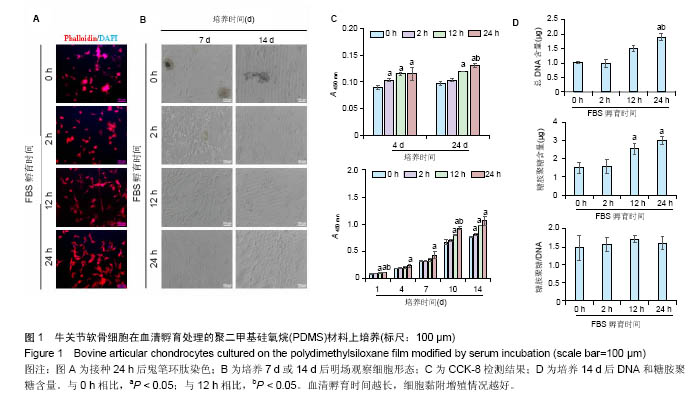
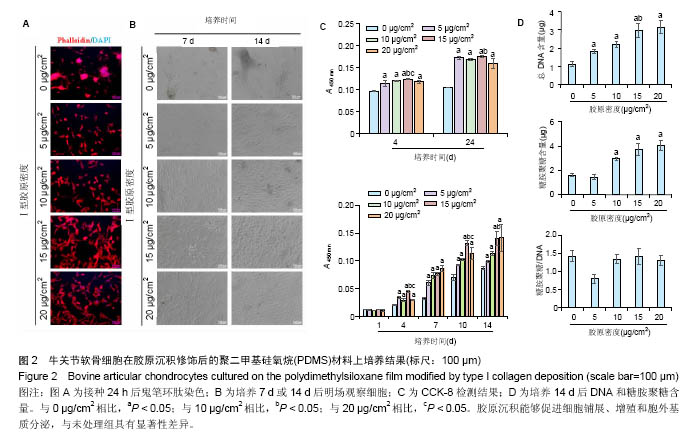
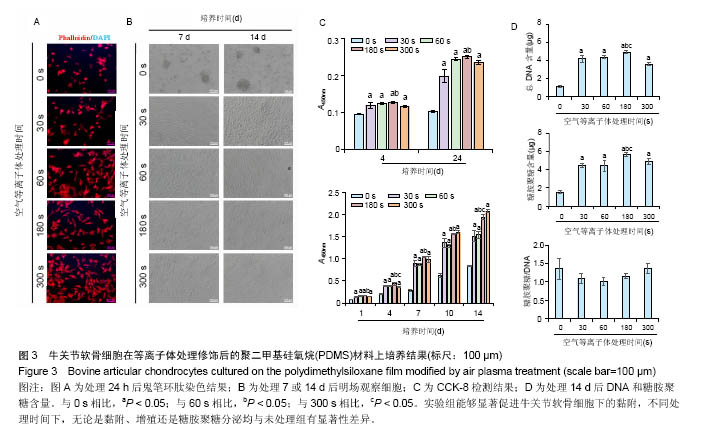
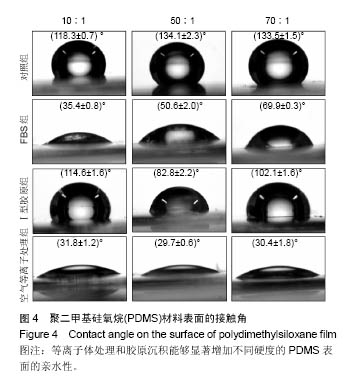
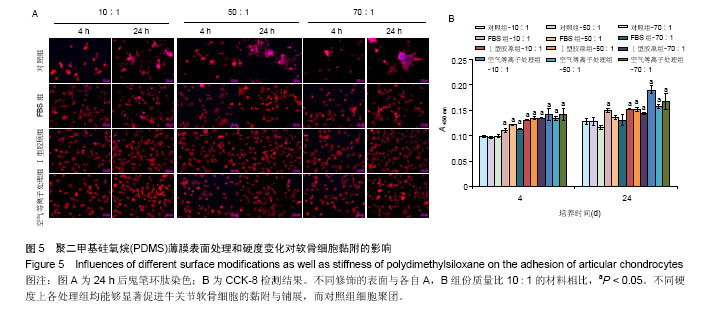
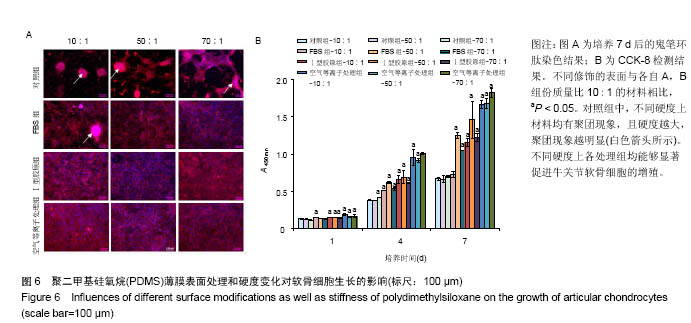

.jpg)